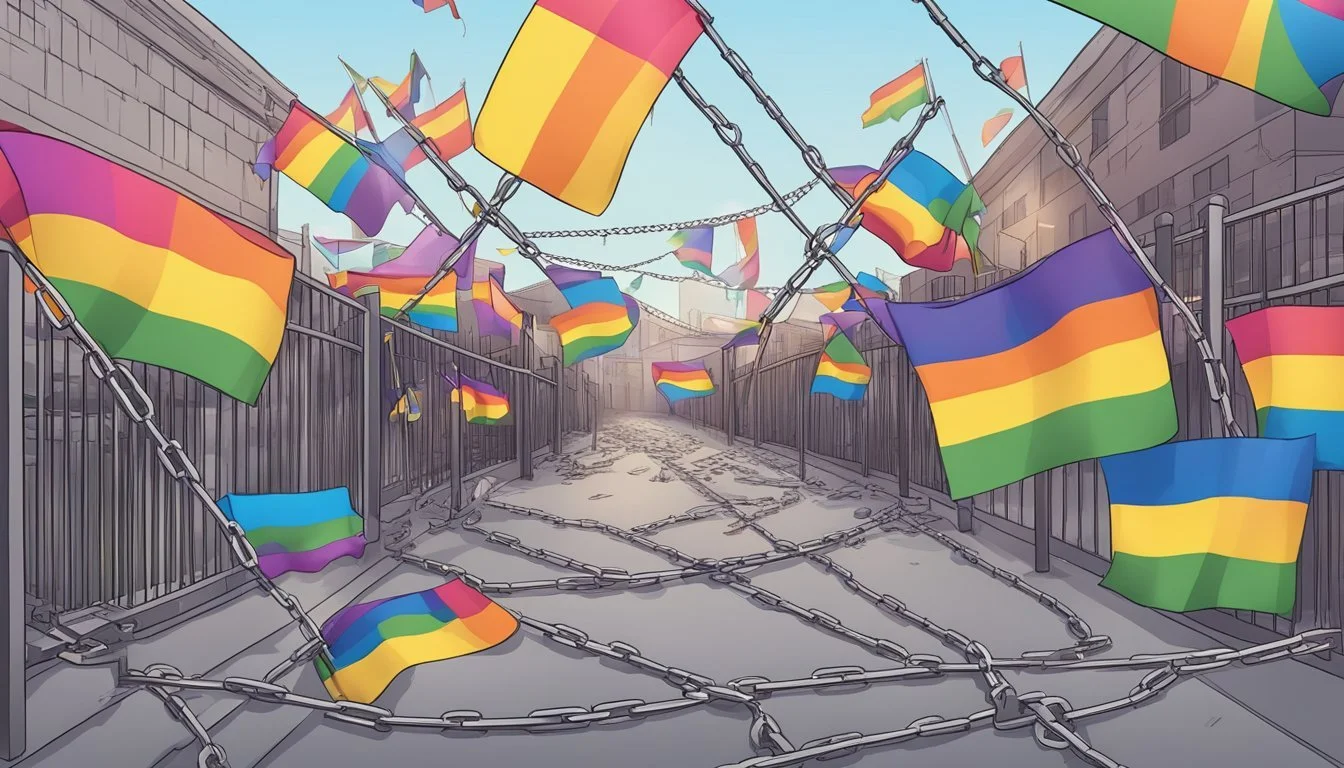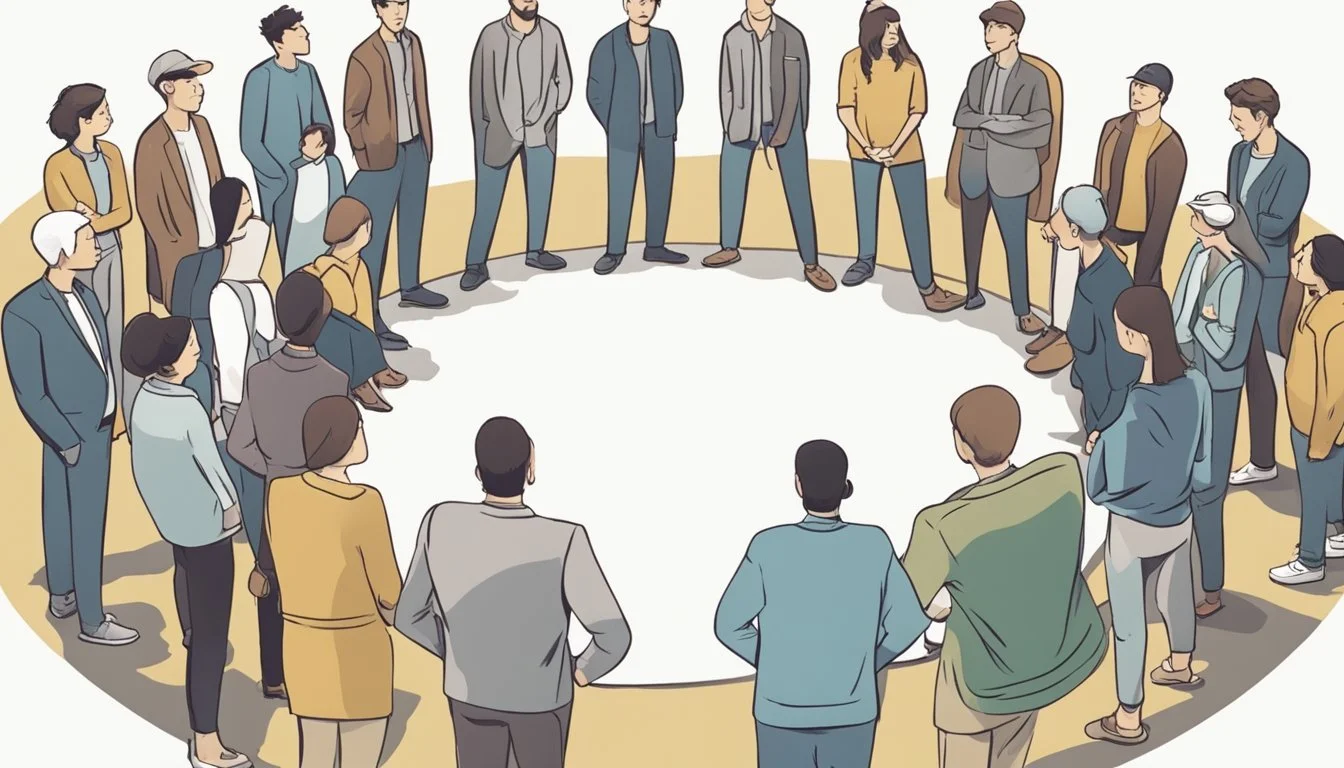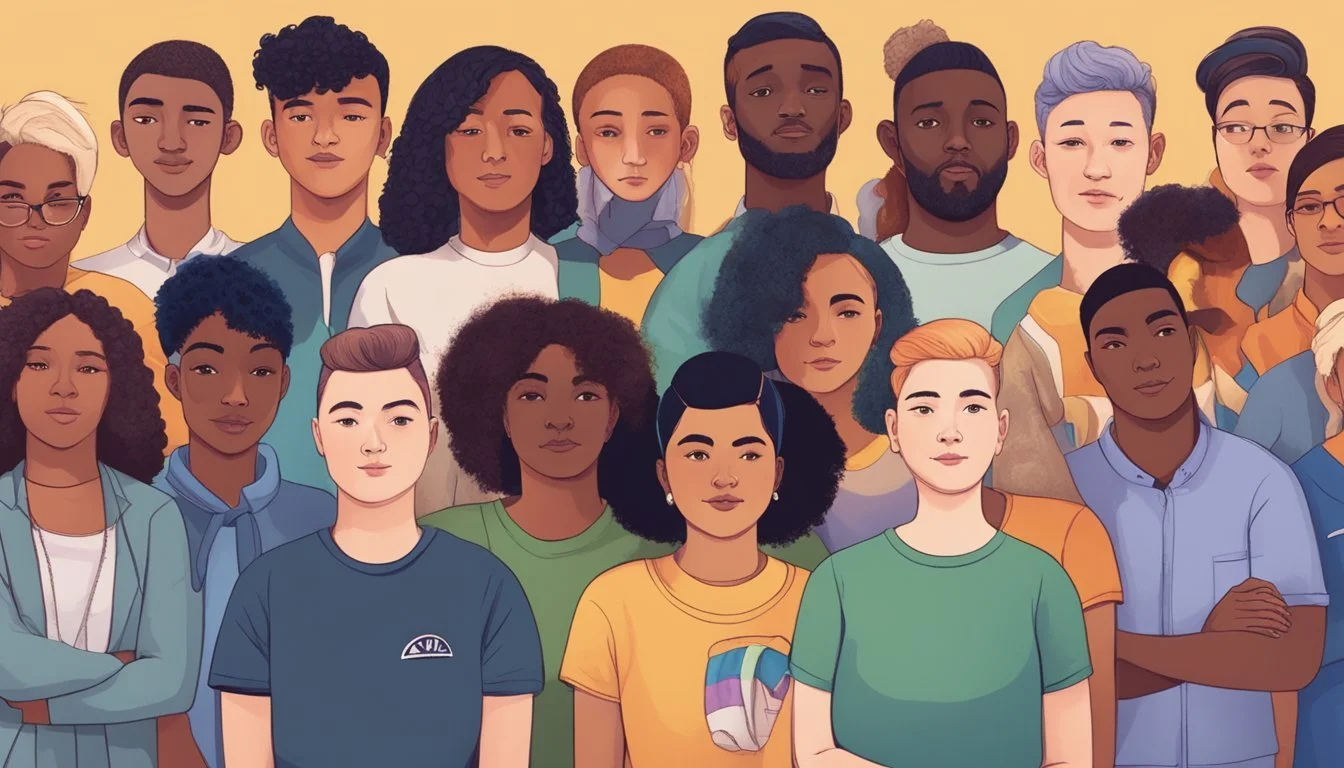6 Types of Trauma That Can Occur in LGBTQIA+ Communities
Overview and Impacts
Experiencing trauma is not uncommon, yet the LGBTQIA+ communities often face unique challenges. The trauma they endure may stem from various sources including discrimination, social rejection, and even violence. These experiences can deeply impact their mental and emotional well-being.
Understanding these types of trauma is crucial for developing effective support systems for those affected. By recognizing the specific forms of trauma encountered by LGBTQIA+ individuals, communities and healthcare providers can offer better, more empathetic assistance tailored to their needs.
1) Family Rejection
Family rejection remains a significant type of trauma for many LGBTQIA+ individuals. Rejection by family members can lead to enduring psychological and emotional distress.
Those who face family rejection are at a higher risk of experiencing depression, anxiety, and other mental health issues. They may also be more likely to misuse substances such as alcohol and drugs.
Many LGBTQIA+ individuals also suffer from a heightened risk of homelessness due to being forced to leave their homes. This instability further exacerbates their mental health struggles and increases their vulnerability to other forms of trauma.
Family rejection may even lead to suicidal thoughts and attempts. The lack of a supportive and understanding family network can leave these individuals feeling isolated and hopeless.
For more information on how family rejection impacts mental health, visit this UPMC article.
2) Homophobic Violence
Homophobic violence includes physical assaults, verbal abuse, and harassment directed at individuals due to their perceived or actual sexual orientation. It is a pervasive issue in many communities.
Many LGBTQIA+ individuals face threats in public spaces, schools, and even within their own homes. This violence can result in severe physical injuries and long-lasting psychological trauma.
Exposure to such violence often leads to higher rates of PTSD and anxiety. LGBTQIA+ individuals frequently report feeling unsafe in their day-to-day lives.
Social stigma and discrimination exacerbate the effects of homophobic violence, leaving many victims without adequate support systems. This lack of support further isolates them.
Survivors of homophobic violence may hesitate to seek help due to fears of further victimization or discrimination. Access to specialized support services is vital for healing and recovery.
3) Transphobic Discrimination
Transphobic discrimination refers to prejudice, harassment, and violence directed at transgender and gender diverse individuals. It can occur in various settings, including workplaces, schools, healthcare facilities, and public spaces.
In workplaces, transgender individuals often face barriers to employment and discriminatory practices. This can result in limited job opportunities and lower income levels.
In schools, transgender students may experience bullying, harassment, and exclusion. According to UPMC HealthBeat, a significant percentage of LGBTQIA+ students report having been bullied or harassed at school.
In healthcare settings, transgender people might encounter stigma and lack of understanding from medical professionals. This can lead to inadequate healthcare and mental health support.
Public spaces can also be areas where transgender individuals face verbal abuse, physical violence, and other forms of discrimination. This exposure can contribute to higher rates of PTSD among transgender individuals.
4) Conversion Therapy
Conversion therapy refers to practices aimed at changing an individual's sexual orientation or gender identity. This approach is widely discredited by medical and psychological associations due to its harmful effects.
Researchers estimate that around 350,000 U.S. adults received conversion therapy as adolescents. This practice is linked to significant psychological distress, including increased rates of depression and suicidality.
An estimated 16,000 youth will undergo conversion therapy by a mental health professional before they reach age 18. This number jumps to approximately 57,000 when considering interventions from religious or spiritual advisors.
The practice of conversion therapy is also problematic for its lack of scientific validity. It reinforces negative stereotypes and stigma against LGBTQIA+ identities, contributing to widespread social and emotional harm.
Many regions have laws banning conversion therapy for minors. Despite these legal steps, the availability of these practices persists in some areas, continuing to put vulnerable individuals at risk.
Key resources such as the American Psychological Association provide detailed information on the detrimental effects of conversion therapy. Their advocacy helps raise awareness and promote mental health support for the LGBTQIA+ community.
5) Hate Crimes
Hate crimes against LGBTQIA+ individuals are alarmingly prevalent. Data from a UCLA study shows that LGBTQIA+ people are nine times more likely to be victims of violent hate crimes compared to non-LGBTQIA+ individuals.
In particular, FBI data from 2019 highlights a rise in anti-LGBTQIA+ hate crimes, including increasing rates of police brutality. The frequency of threats, harassment, and violence, both online and offline, adds layers of trauma to the community's lived experiences.
The National Crime Victimization Survey (NCVS) further supports these findings, focusing on personal violent hate crimes as the most prevalent type of anti-LGBTQIA+ hate crime. Property crimes, though also documented, are less common but still significant.
For LGBTQIA+ youth, bullying and harassment in schools create an environment of fear and instability. Statistics reveal that 75% of LGBTQIA+ students have faced bullying, and 35% have endured physical assault in educational settings.
These persistent and pervasive hate crimes contribute to long-term mental health issues, such as anxiety, depression, and PTSD, deeply affecting the well-being of LGBTQIA+ individuals. The compounded impact of such trauma underscores the urgent need for comprehensive support systems and protective measures for these communities.
6) Internalized Homophobia
Internalized homophobia refers to the internalization of negative societal attitudes about LGBTQIA+ individuals and applying them to oneself. This can lead to significant mental health issues, including depression and anxiety.
People experiencing internalized homophobia may struggle with self-acceptance and face a distorted sense of self-worth. This internal conflict often results in heightened stress and emotional distress.
Research indicates that internalized homophobia can exacerbate post-traumatic stress disorder (PTSD) symptoms in sexual minorities with a history of trauma. Those affected may exhibit increased severity in PTSD symptoms due to this internalized stigma.
Fear of societal judgment and discrimination can compel individuals to conceal their sexual identity, leading to a constant state of vigilance and tension. This persistent stress can further impact the emotional well-being of LGBTQIA+ individuals.
Internalized homophobia is also linked to higher rates of suicidal behaviors among LGBTQIA+ populations, as the struggle with self-acceptance and external discrimination becomes overwhelming.
For support and resources, organizations such as The Trevor Project provide valuable assistance, including hotlines and text lines for immediate help.
Understanding LGBTQIA+ Trauma
Trauma in LGBTQIA+ communities can have profound impacts, influenced by a variety of factors including societal discrimination and personal identity struggles. Recognizing these elements is crucial for support and intervention.
Definition and Overview
LGBTQIA+ trauma refers to the psychological, emotional, and sometimes physical damage experienced by individuals due to their sexual orientation, gender identity, or related aspects of their identity. This type of trauma can stem from direct experiences like bullying, harassment, and violence, as well as indirect experiences such as witnessing discrimination against others. Trauma impacts the mental health and overall well-being of LGBTQIA+ individuals, leading to conditions like anxiety, depression, and PTSD.
Factors Contributing to Trauma
Several factors can contribute to trauma within LGBTQIA+ communities. Discrimination and social stigma play significant roles, as negative societal attitudes and prejudices create hostile environments. Family rejection or lack of support exacerbates feelings of isolation and distress. Bullying and harassment in schools and workplaces can lead to chronic stress and fear. Additionally, internalized homophobia or transphobia may cause self-esteem issues and internal conflicts. Access to mental health resources is often limited, further aggravating these experiences. Efforts to increase awareness and provide supportive resources can mitigate these contributing factors, helping individuals navigate their trauma more effectively.
Psychological Impact
LGBTQIA+ individuals often face significant psychological challenges due to the trauma they experience. These psychological impacts can manifest in various mental health issues and different coping mechanisms employed by individuals.
Mental Health Consequences
LGBTQIA+ individuals are at a higher risk of developing mental health issues such as depression, anxiety, and PTSD. According to UPMC HealthBeat, bullying and assault contribute significantly to these conditions. Many students report high levels of harassment, leading to severe emotional and psychological distress.
These mental health consequences also include self-harm behaviors and suicidal ideation. The Trevor Project provides essential support to young LGBTQIA+ people experiencing crises, indicating the acute need for specialized mental health services. Emotional neglect and familial rejection can intensify feelings of isolation and hopelessness, deepening psychological trauma.
Addressing these mental health issues often requires comprehensive support systems, including therapy, community support, and sometimes medication. The impact on mental health is profound and multifaceted, requiring personalized interventions.
Coping Mechanisms
Various coping mechanisms are employed by LGBTQIA+ individuals to manage the psychological impact of trauma. Some seek out community support groups where they can share their experiences in a safe space. Organizations like The Trevor Project and Trans Lifeline provide crucial, accessible resources through hotlines and online chats.
Other coping strategies include engaging in creative outlets such as art, music, and writing. These activities offer therapeutic benefits, helping individuals process their emotions and express themselves in non-verbal ways.
Additionally, some adopt mindfulness and relaxation techniques like meditation and yoga to reduce stress. Professional therapy remains a cornerstone, offering structured support and evidence-based treatments. Unfortunately, some might turn to harmful coping mechanisms, such as substance abuse, indicating the importance of accessible mental health services and community support networks in fostering healthier coping strategies.
Social and Cultural Considerations
In LGBTQIA+ communities, social and cultural factors significantly influence experiences of trauma. Community support systems and the role of family and friends are crucial elements that shape mental health outcomes and recovery paths.
Community Support Systems
LGBTQIA+ individuals often find solace and refuge in community support systems. These networks provide emotional support, companionship, and a sense of belonging. Organizations like The Trevor Project and Trans Lifeline offer specialized services for crisis intervention and mental health support.
Such organizations frequently conduct support groups, workshops, and social events that foster a safe environment. These activities help members cope with stigma, discrimination, and internalized stress. Community centers and online forums also play vital roles in forming peer networks, encouraging mutual aid, and disseminating resources.
Access to culturally competent healthcare providers and mental health professionals is another critical facet. These professionals understand unique challenges faced by LGBTQIA+ individuals, ensuring that care is respectful and effective. Inclusive policies in workplaces and schools further contribute to reducing trauma by promoting acceptance and equality.
Role of Family and Friends
Family and friends hold significant influence over an LGBTQIA+ person’s well-being. Acceptance and support from these groups can greatly mitigate the effects of trauma. Conversely, rejection and hostility can exacerbate mental health struggles. Educational resources such as those provided by UPMC can help families understand and support their LGBTQIA+ members better.
Positive engagements often include open communication, validation of identity, and active participation in advocacy. Parents and siblings who show unconditional love and allyship contribute positively to mental health. Attending family therapy sessions and participating in inclusive events further strengthens these bonds.
Friends also play a crucial role by providing day-to-day emotional support. Allies among peer groups can offer safe spaces for expression and understanding. This communal support plays a central role in helping LGBTQIA+ individuals navigate societal challenges, fostering resilience against trauma.






